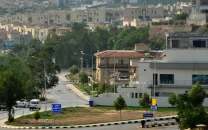Karachi tremors
.

Karachi continues to tremble under a series of light to moderate earthquakes, with 27 tremors recorded across Malir, DHA, Quaidabad, Korangi and Gadap neighbourhoods for four days in a row since Sunday. Officials attribute this surge in seismic activity to the reactivation of the Landhi fault line — a dormant structure that now appears to be stirring.
While the National Tsunami Center has described the gradual release of underground energy as a "natural process" that may reduce the risk of a major quake, the reactions among experts and residents suggest a deeper uncertainty. The confusion is real and growing. Some scientists insist this is not unusual — that Karachi, though not a seismic hotspot, does occasionally experience such activity.
Others argue that the frequency and intensity of these tremors are unprecedented for the city. Meanwhile, social media is rife with speculation and conflicting information. Amid all this noise, one cannot ignore that Karachi's preparedness is dangerously inadequate. Despite being home to over 20 million people, the city has no cohesive earthquake response strategy.
Construction in many areas remains unregulated, and buildings are not designed with seismic resilience in mind. If these tremors are, in fact, part of a larger seismic shift, Karachi and its people are not ready.
Regardless of whether this recent activity is a harmless discharge of tectonic pressure or a warning sign of worse to come, the city's response cannot be shaped by guesswork. Authorities must act on the side of caution. A full geological assessment, updated seismic risk maps, mandatory building inspections and emergency preparedness drills must become immediate priorities. Karachi may or may not be entering a new seismic chapter, but the complacency we've seen so far must end.














COMMENTS
Comments are moderated and generally will be posted if they are on-topic and not abusive.
For more information, please see our Comments FAQ